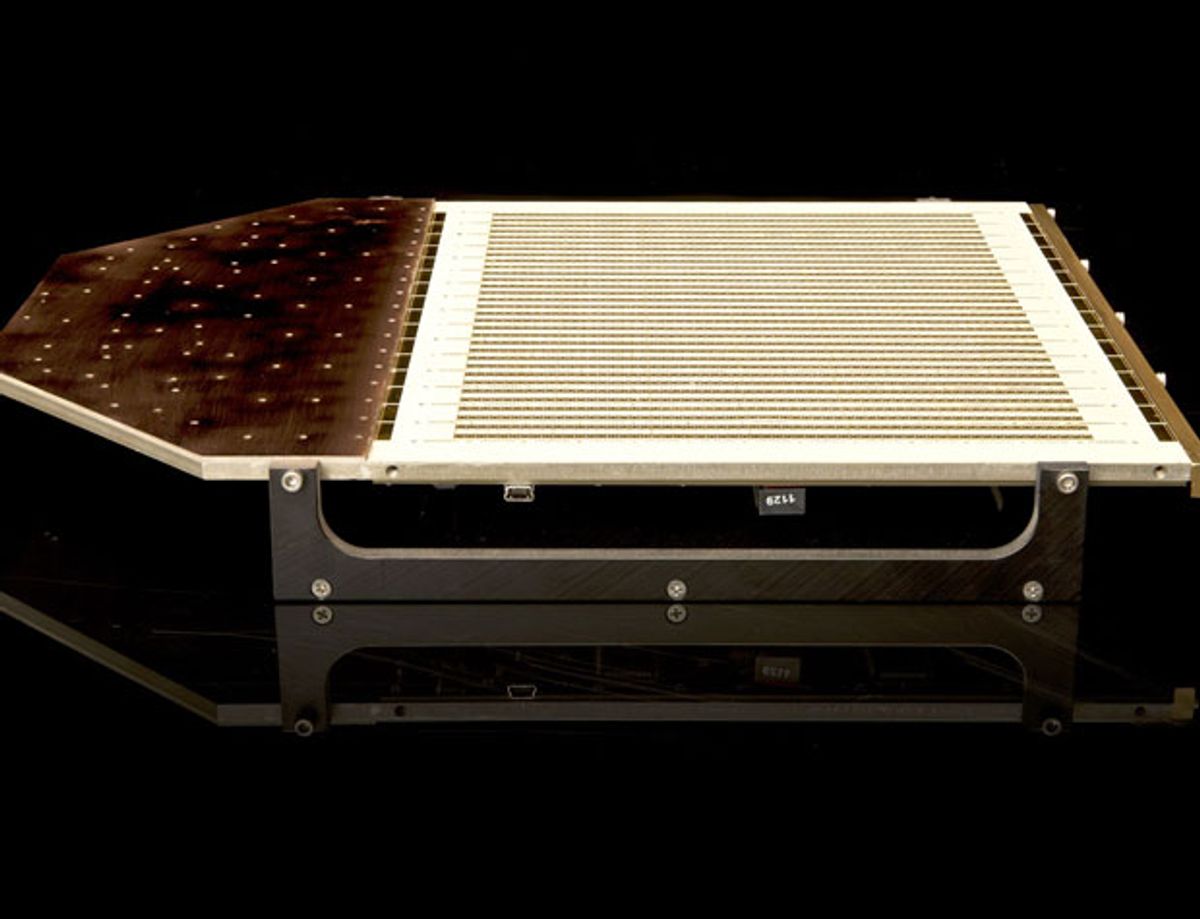Still waiting for cheap, portable satellite broadband? Since it spun off from Intellectual Ventures last August, the Washington, D.C.-based startup Kymeta has been working on a line of products aimed at bringing affordable high-speed data service to remote or mobile locations, such as planes, trains, oil rigs and disaster zones. Now, after months in the laboratory, the company has announced its technology is able to work with an actual satellite.
This is no small feat. Kymeta’s satellite terminals rely on a proprietary beam-steering antenna design based on synthetic metamaterials, which can bend electromagnetic waves in ways that natural materials can’t. The antennas are flat and wide; the smallest are about the size and shape of a laptop. They are equipped with an array of metamaterial elements that can be electronically tuned to maintain a satellite connection. (For a more detailed description of the technology’s inner workings, read Katie Palmer’s January 2012 IEEE Spectrum story about it.)
There are other, less exotic ways of linking to a satellite on the go, such as with mechanical gimbals or phased arrays. But such systems are bulky, expensive, and power hungry. Kymeta is aiming for products that are lightweight, low power, and—because they can be manufactured using standard lithography—cheap.
Kymeta seems well on its way to showing this can be done.
Last week, the company claimed its “portable satellite terminal” successfully locked onto a broadcast satellite in the Ka frequency band—a logical first step, because it offers higher bandwidth than other commonly used bands. The antenna maintained the connection for hours while it received high-definition television programming, says Håkan Olsson, Kymeta's senior director of marketing. And apparently, the antenna required only 3 watts of power, siphoned through a USB cable.
Kymeta believes this is the first demonstration anywhere of a metamaterials antenna establishing a connection with a communications satellite. Olsson says the company's next big challenge is to go the other way—upload data from its metamaterials antenna to a Ka-band satellite.
Image: metamaterials antenna prototype, Intellectual Ventures Lab



